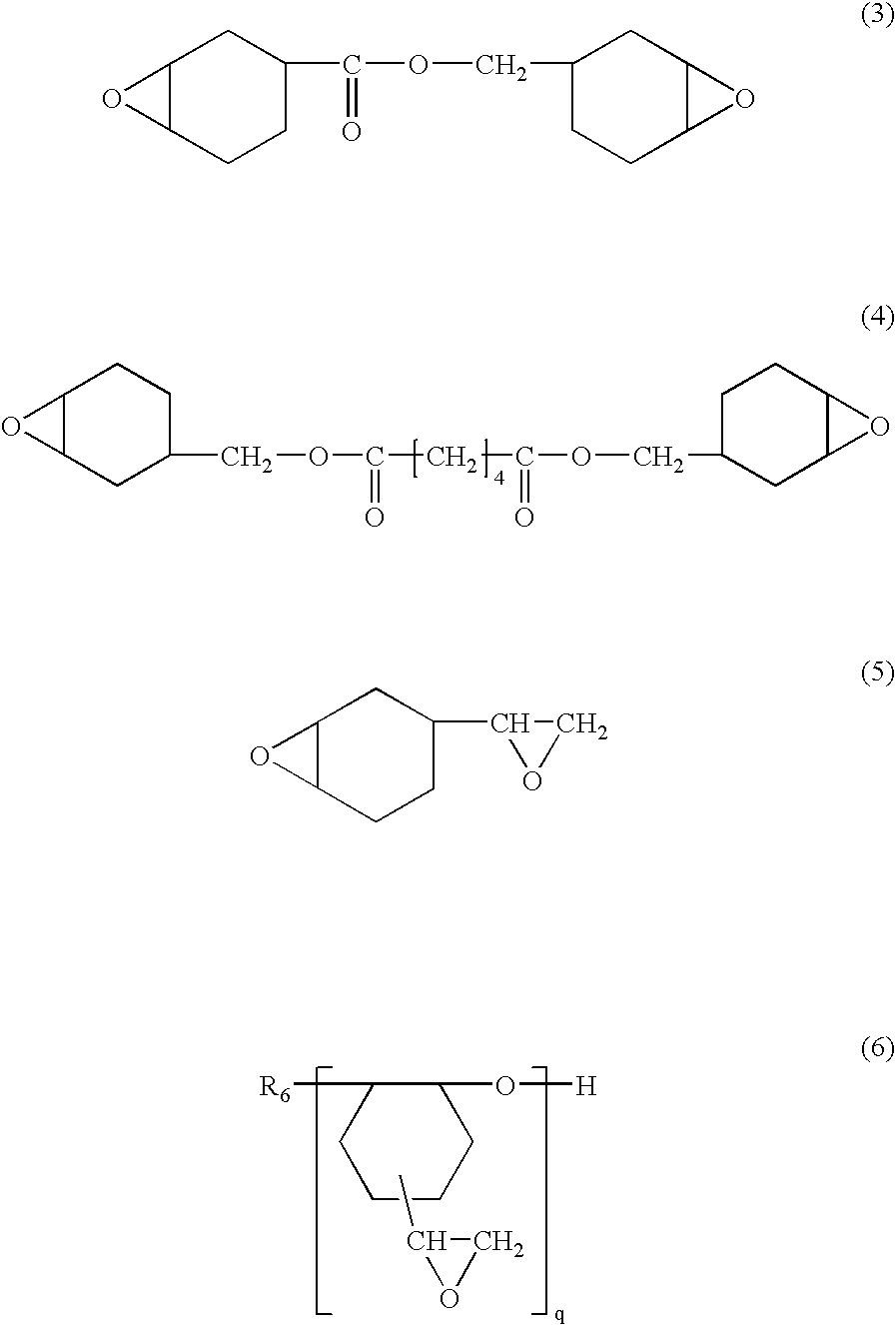Transparent composite composition
a composite composition and transparent technology, applied in the field of transparent composite compositions, can solve the problems of difficult application of such compositions in such fields, impaired transparency of substrates, diffused refraction of light passing through resins, etc., and achieve excellent heat resistance and solvent resistance, low coefficient of linear expansion, and excellent transparency
- Summary
- Abstract
- Description
- Claims
- Application Information
AI Technical Summary
Benefits of technology
Problems solved by technology
Method used
Image
Examples
example 1
[0062]A glass cloth made of S glass (thickness 100 μm, refractive index 1.530, product of Unitika Glass fiber, #2117 type) was deprived of organic matter by burning and then treated with γ-glycidoxypropyltrimethoxysilane (epoxysilane). This glass cloth was impregnated with a resin prepared by melt blending, at 110° C., 90 parts by weight of triglycidyl isocyanurate (TEPIC, product of Nissan Chemical Industries), 10 parts by weight of a bisphenol S-based epoxy resin (Epiclon EXA 1514, product of Dainippon Ink and Chemicals), 170 parts by weight of hydrogenated methylnadic anhydride (Rikacid HNA-100, product of New Japan Chemical) and 2 parts by weight of tetraphenyiphosphonium bromide (TPP-PB, product of Hokko Chemical Industry), and the impregnated cloth was degassed. This glass cloth was sandwiched between release agent-treated glass sheets, and heated in an oven at 100° C. for 2 hours and, further successively, at 120° C. for 2 hours, at 150° C. for 2 hours, at 175° C. for 2 hours...
example 2
[0063]An S glass-based glass cloth treated in the same manner as in Example 1 was impregnated with a resin prepared by melt blending, at 110° C., 62.5 parts by weight of triglycidyl isocyanurate (TEPIC, product of Nissan Chemical Industries), 27.5 parts by weight of a bisphenol S-based epoxy resin (Epiclon EXA 1514, product of Dainippon Ink and Chemicals), 120 parts by weight of methylhexahydrophthalic anhydride (Rikacid MH-700, product of New Japan Chemical) and 1.4 parts by weight of tetra-phenylphosphonium bromide (TPP-PB, product of Hokko Chemical Industry), and the impregnated cloth was degassed. This glass cloth was sandwiched between release agent-treated glass sheets, and subjected to heat treatment in an oven under the same conditions as in Example 1 to give a transparent sheet having a thickness of 0.1 mm.
example 3
[0064]An E glass-based glass cloth (thickness 100 μm, refractive index 1.560, product of Unitika Glass fiber, #2117 type) was deprived of organic matter by burning and then treated with γ-glycidoxypropyltrimethoxysilane (epoxysilane). This glass cloth was impregnated with a resin prepared by melt blending, at 100° C., 20 parts by weight of triglycidyl isocyanurate (TEPIC, product of Nissan Chemical Industries), 80 parts by weight of a bisphenol S-based epoxy resin (Epiclon EXA 1514, product of Dainippon Ink and Chemicals), 75 parts by weight of hydrogenated methylnadic anhydride (Rikacid HNA-100, product of New Japan Chemical) and 1 part by weight of tetraphenylphosphonium bromide (TPP-PB, product of Hokko Chemical Industry), and the impregnated cloth was degassed. This glass cloth was sandwiched between release agent-treated glass sheets, and subjected to heat treatment in an oven under the same conditions as in Example 1 to give a transparent sheet having a thickness of 0.1 mm.
PUM
| Property | Measurement | Unit |
|---|---|---|
| Temperature | aaaaa | aaaaa |
| Fraction | aaaaa | aaaaa |
| Thickness | aaaaa | aaaaa |
Abstract
Description
Claims
Application Information
 Login to View More
Login to View More - R&D
- Intellectual Property
- Life Sciences
- Materials
- Tech Scout
- Unparalleled Data Quality
- Higher Quality Content
- 60% Fewer Hallucinations
Browse by: Latest US Patents, China's latest patents, Technical Efficacy Thesaurus, Application Domain, Technology Topic, Popular Technical Reports.
© 2025 PatSnap. All rights reserved.Legal|Privacy policy|Modern Slavery Act Transparency Statement|Sitemap|About US| Contact US: help@patsnap.com



